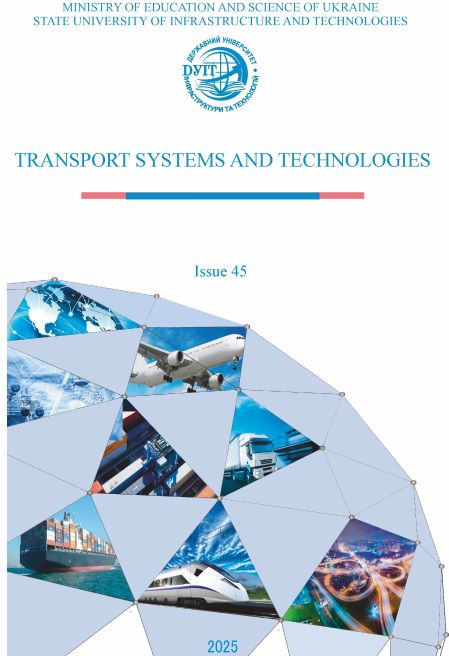Intelligent digital twin utilization for real-time forecasting and optimization of the ship's power system
Keywords:
ship power system, digital twin, telemetry, load forecasting, anomaly detection, energy efficiency, autonomous control, intelligent algorithms, real-time operation, IMOAbstract
The paper presents the concept and mathematical model of an intelligent digital twin of a ship’s power system, designed for real-time operation. The proposed solution integrates dynamic energy balance modeling, telemetry signal processing using a Kalman filter, load forecasting with long short-term memory (LSTM) neural networks, anomaly detection mechanisms, and optimization modules. The digital twin is implemented as a modular software architecture capable of integration with onboard control systems and cloud-based fleet analytics platforms. A series of computational experiments in MATLAB/Simulink simulates both typical and critical operational conditions, including stable load, overloads, generator failures, voltage instability, and energy-saving modes. The results demonstrate strong convergence between simulated and computed values, as well as timely system responses to emerging anomalies and effective optimization decisions. The developed model highlights the potential of digital twin technology to enhance energy efficiency, operational reliability, and environmental sustainability in modern maritime transport. It provides a foundation for advanced autonomous energy management and supports compliance with evolving IMO decarbonization and safety requirements.
References
Li, H., Zhang, R., Zheng, S., Shen, Y., Fu, C., & Zhao, H. (2024). Digital twin-driven intelligent operation and maintenance platform for large-scale hydro-steel structures. Advanced Engineering Informatics, 62, 102661. https://doi.org/10.1016/j.aei.2024.102661.
Liu, Z., Chu, Y., Li, G., Hildre, H. P., & Zhang, H. (2024). Shipboard crane digital twin: An empirical study on R/V Gunnerus. Ocean Engineering, 302, 117675. https://doi.org/10.1016/j.oceaneng.2024.117675.
Es-haghi, M. S., Anitescu, C., & Rabczuk, T. (2024). Methods for enabling real-time analysis in digital twins: A literature review. Computers & Structures, 297, 107342. https://doi.org/10.1016/j.compstruc.2024.107342.
Ubina, N. A., Lan, H., Cheng, S., Chang, C., Lin, S., Zhang, K., Lu, H., Cheng, C., & Hsieh, Y. (2023). Digital twin-based intelligent fish farming with Artificial Intelligence Internet of Things (AIoT). Smart Agricultural Technology, 5, 100285. https://doi.org/10.1016/j.atech.2023.100285.
Fu, X., Li, S., Song, H., & Lu, Y. (2025). Digital Twin-driven multi-scale characterization of machining quality: Current status, challenges, and future perspectives. Robotics and Computer-Integrated Manufacturing, 93, 102902. https://doi.org/10.1016/j.rcim.2024.102902.
Mohanraj, R., & Vaishnavi, B. K. (2025). Data enabling technology in digital twin and its frameworks in different industrial applications. Journal of Industrial Information Integration, 44, 100793. https://doi.org/10.1016/j.jii.2025.100793.
Zou, Y., Liu, Y., Chen, Z., Liu, J., Chen, J., Chen, M., Lv, P., Duan, H., & Li, H. (2024). Data driven digital twin system for the cross-domain vehicle. Ocean Engineering, 311, 118846. https://doi.org/10.1016/j.oceaneng.2024.118846.
Shang, G., Xu, L., Li, Z., Zhou, Z., & Xu, Z. (2024). Digital-twin-based predictive compensation control strategy for seam tracking in steel sheets welding of large cruise ships. Robotics and Computer-Integrated Manufacturing, 88, 102725. https://doi.org/10.1016/j.rcim.2024.102725.
Liu, J., Zhang, Y., Liu, Z., Leng, J., Zhou, H., Gu, S., & Liu, X. (2024). Digital twins enable shipbuilding. Alexandria Engineering Journal, 107, 915-931. https://doi.org/10.1016/j.aej.2024.09.007.
Khaled, I., Vasiukov, D., Shakoor, M., Bennebach, M., & Chaki, S. (2023). Digital Twin for Predicting Progressive Damage in Operating Pressure Vessels. Procedia Structural Integrity, 57, 280-289. https://doi.org/10.1016/j.prostr.2024.03.030.
Vashishth, T. K., Sharma, V., Sharma, K. K., Kumar, B., Chaudhary, S., & Panwar, R. (2024). Digital twins solutions for smart logistics and transportation. Digital Twins for Smart Cities and Villages, 353-376. https://doi.org/10.1016/B978-0-443-28884-5.00016-6.
Javaid, M., & Haleem, A. (2024). Role of digital twin and blockchain in logistics and supply chain management. Digital Twin and Blockchain for Sensor Networks in Smart Cities, 243-264. https://doi.org/10.1016/B978-0-443-30076-9.00012-1.
Majidi Nezhad, M., Neshat, M., Sylaios, G., & Astiaso Garcia, D. (2024). Marine energy digitalization digital twin's approaches. Renewable and Sustainable Energy Reviews, 191, 114065. https://doi.org/10.1016/j.rser.2023.114065.
Onishchenko, O., Bulgakov, M., Melnyk, O., Volianska, Y., Storchak, O., & Kovalchuk, M. (2024). Environmental sustainability in maritime transportation through the development of strategies to reduce emissions from marine internal combustion engines. In Studies in Systems, Decision and Control, 561, 509–534. https://doi.org/10.1007/978-3-031-68372-5.
Bulgakov, M., Melnyk, O., Kuznichenko, S., Zaporozhets, A., Sagaydak, O., & Shcheniavskyi, G. (2025). Assessing the effectiveness of deoxygenation methods in ballast water treatment. In Studies in Systems, Decision and Control (Vol. 580, pp. 107–119). Springer. https://doi.org/10.1007/978-3-031-82027-4_7.
Downloads
Published
How to Cite
Issue
Section
License

This work is licensed under a Creative Commons Attribution 4.0 International License.
Copyright: This is an open-access article distributed under the terms of the Creative Commons Attribution License, which permits unrestricted use, distribution, and reproduction in any medium, provided the original author and source are credited.














